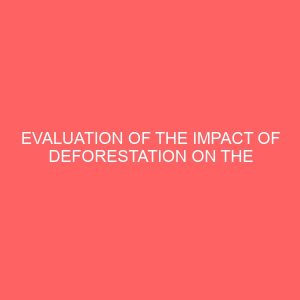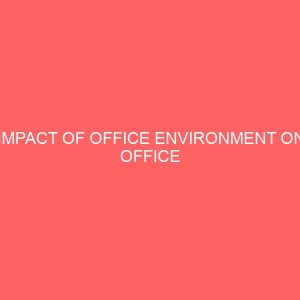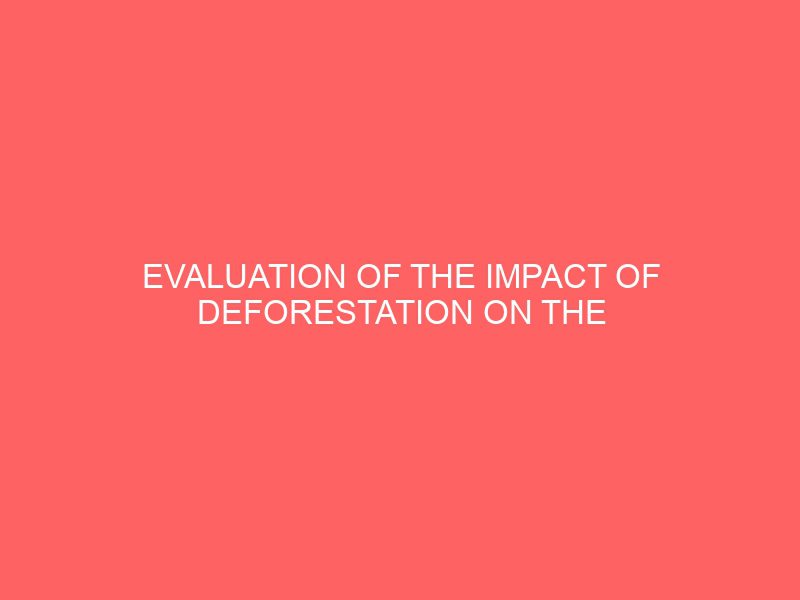Description
CHAPTER ONE
INTRODUCTION
1.1 BACKGROUND OF THE STUDY
Forests cover almost a third of the earth’s land surface providing many environmental benefits including a major role in the hydrologic cycle, soil conservation, prevention of climate change and preservation of biodiversity. Forest resources can provide long-term national economic benefits. For example, at least 145 countries of the world are currently involved in wood production (Anon, 2010). Sufficient evidence is available that the whole world is facing an environmental crisis on account of heavy deforestation. For years remorseless destruction of forests has been going on and we have not been able to comprehend the dimension until recently. Nobody knows exactly how much of the world’s rainforests have already been destroyed and continue to be razed each year.
Deforestation is the conversion of forest to an alternative permanent non-forested land use such as agriculture, grazing or urban development. Deforestation is primarily a concern for the developing countries of the tropics as it is shrinking areas of the tropical forests causing loss of biodiversity and enhancing the greenhouse effect (Angelsen et al., 2011). FAO considers a plantation of trees established primarily for timber production to be forest and therefore does not classify natural forest conversion to plantation as deforestation (but still records it as a loss of natural forests). However, FAO does not consider tree plantations that provide non-timber products to be forest although they do classify rubber plantations as forest. Forest degradation occurs when the ecosystem functions of the forest are degraded but where the area remains forested rather cleared (Anon., 2010).
Over the years, sustainable management of forest resources has been of primary concern due to its potential impact on biological diversity and importance in maintaining global ecological functions. In spite of its importance, the natural tropical high forest has continued to diminish rapidly in the African continent, thus dwindling sustainable forest management. Nigeria could face the possibility of timber and fuel wood scarcity towards the end of the century. It has been predicted that within the next fifty years, unless adequate measures are taken, most humid tropical forestland area in Africa could be transformed into unproductive land and the deterioration of the savannah into desert will be accelerated (Hunter et al, 2010).
The level of community nutrition is sometimes linked to fuel wood availability and cost, majority of the people residing in Ukwa local government area of Imo state use fuel wood as their main source of energy for cooking. In many areas, due to increasing population the existing wood resources are over exploited. With extensive deforestation, villagers in Ukwa local government area of Imo state are compelled to walk long distance to fetch fuel wood. This tends to have serious consequences for local agricultural production and productivity because; the rural communities also rely on this substituted resource for improving soil fertility. Apart from the deterioration in the quality of life associated with forest degradation, there are other more insidious effects that endanger the future of humans on this planet.
In Nigeria, environmental problems that are termed degradation collectively, such as desert encroachment, erosion, flooding and drought etc all have a strong link with deforestation. In some parts of South-Eastern states for instance, escalated soil erosion, flooding, increase in aridity, all of which have strong relationship with deforestation, have affected a significant proportion of the state.
According to (; Chowdhury 2013) academia, scholars and researchers are of the opinion that deforestation risk reduction is a systematic approach of identifying, addressing, and reducing the risks of disaster to a community. Generally, deforestation is caused by a variety of factors. However, (Ajibade, 2012) viewed deforestation as clearing of any area of its natural vegetation cover which is normally lead to decrease in plants population resulting in loss of plant biodiversity Nonetheless, excessive deforestation over a long period has been the cause of many drought like features. Deforestation presents multiple environmental problems in our society today.
In view of the background this study intends evaluate the impact of deforestation on the environment using Ukwa L.G.A of Imo state as a case study.
1.2 OBJECTIVES OF THE STUDY
The objectives of the study are as follows;
1. To find out whether there are deforestation activities in Ukwa L.G.A of Imo state
2. To examine the sources of deforestation in Ukwa L.G.A of Imo state
3. To evaluate the impact of deforestation on the environment in Ukwa L.G.A of Imo state
4. To recommend ways for controlling deforestation activities in Ukwa L.G.A of Imo state
1.3 JUSTIFICATION OF THE STUDY
Extensive tropical deforestation is a relatively modern event that gained momentum in the 20th century and particularly in the last half of the 20th century. The struggle to save the world’s rainforests and other forests continues and there is a growing worldwide concern about the issue. In order to save forests, we need to know why they are being destroyed. Distinguishing between the agents of deforestation and its causes is very important in order to understand the major determinants of deforestation. The agents of deforestation are those slash and burn farmers, commercial farmers, ranchers, loggers, firewood collectors, infra-structure developers and others who are cutting down the forests. Causes of deforestation are the forces that motivate the agents to clear the forests.
The impact of deforestation on the environment is devastating. Hence, strategies to prevent and control the menace are being discussed in this study.







